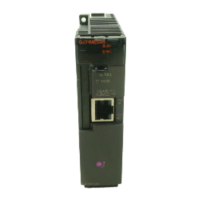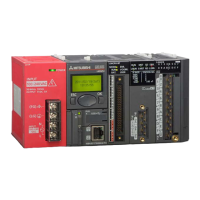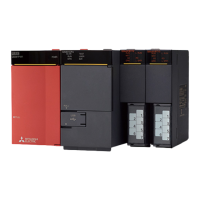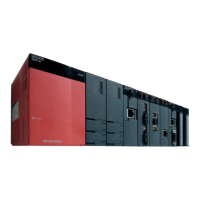18
TROUBLESHOOTING
18.5 Hardware Self-diagnostic Function
18 - 73
17
STARTING
MULTIPLE CPU
SYSTEM
18
TROUBLESHOOTING
APPENDICESINDEX
18.5 Hardware Self-diagnostic Function
(1) Hardware self-diagnostics function
The hardware self-diagnostics function allows the hardware check of the C Controller
module.
When the C Controller module is started up in the hardware self-diagnostic mode, the
following hardware self-diagnostic tests can be executed. ( This section (3))
(2) Before executing hardware self-diagnostic tests
(a) Removing modules and wiring cables
Remove all the wiring cables and modules except for the power supply module
and C Controller module from the C Controller system.
However, for execution of Mode, the self-loopback wiring cable must be
connected.
(b) Mounting in CPU slot
Mount the C Controller module in the CPU slot.
Otherwise, the hardware self-diagnostic tests cannot be executed.
Table18.25 Hardware self-diagnostics function
Mode Diagnostic item Description
Mode 1
ROM diagnostic test Reads the ROM data and performs a sum check.
Work RAM diagnostic test Checks test data by writing/reading/verifying them on the work RAM.
Battery-backed-up RAM
diagnostic test
Checks test data by writing/reading/verifying them on the battery-backed-
up RAM.
Ethernet diagnostic test
Conducts the self-loopback test of CH1 (10BASE-T/100BASE-TX
interface).
Mode 2
CompactFlash
card interface
diagnostic test
Diagnoses the status of the CompactFlash card interface.
(This test does not diagnose whether the installed CompactFlash card is
normal or abnormal. Data are not written to the CompactFlash card.)
Mode 3 RS-232 diagnostic test Conducts the self-loopback test of CH2 (RS-232 interface).
Mode 1+2+3
Diagnostic tests of Modes 1
to 3
Conducts diagnostic tests in order from Mode 1 to 3.
Default setting -
Returns the C Controller module to the factory setting state.
( Section 5.10)
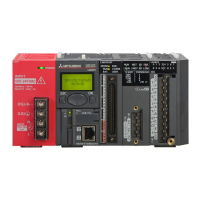
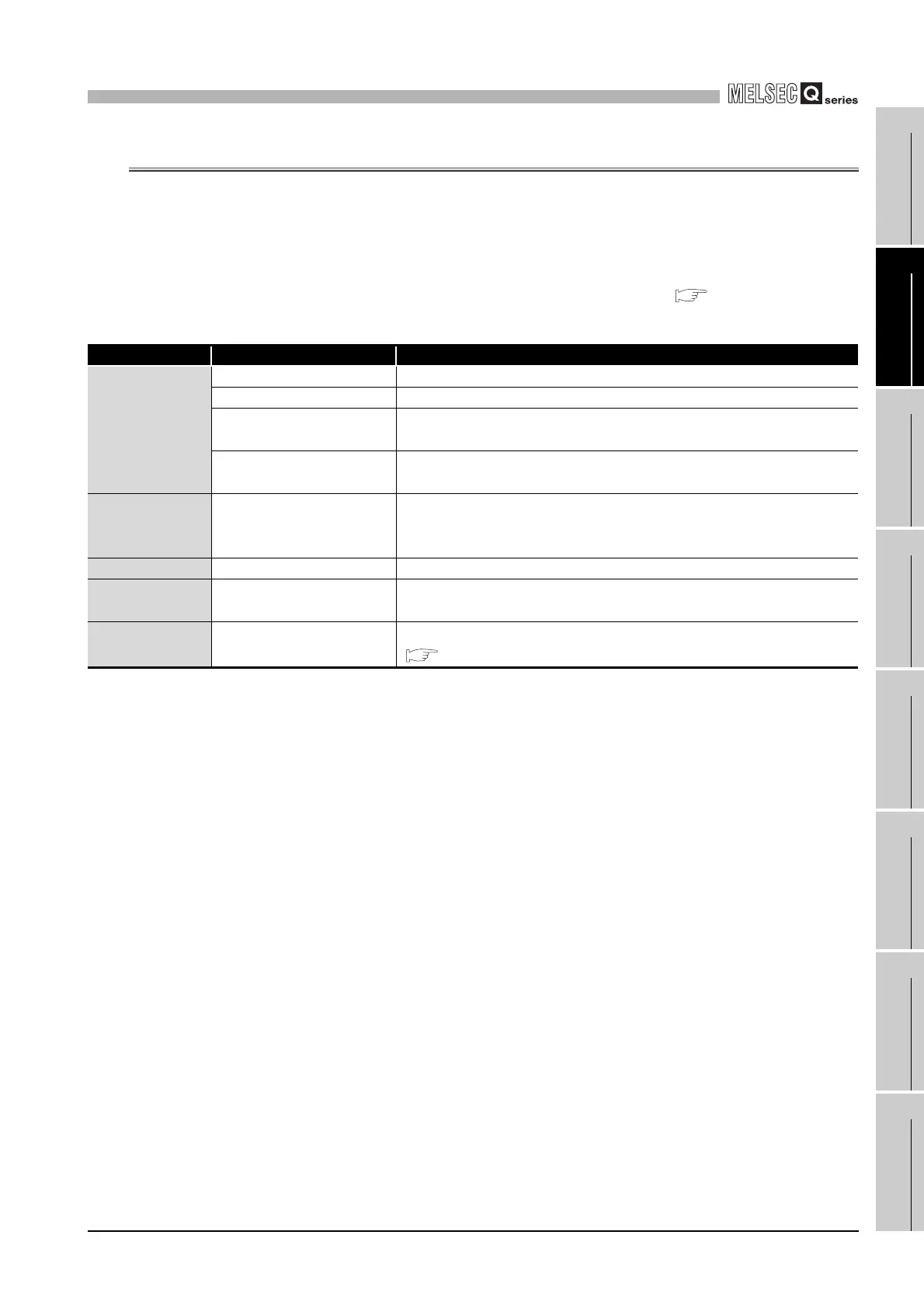